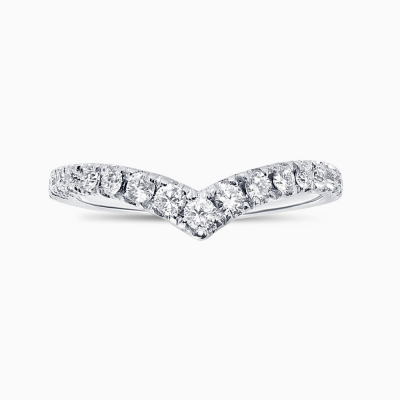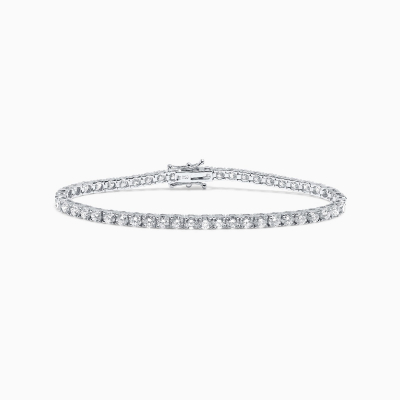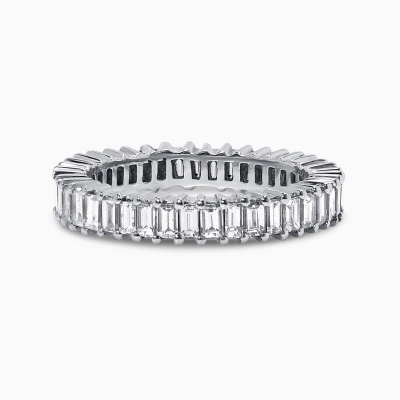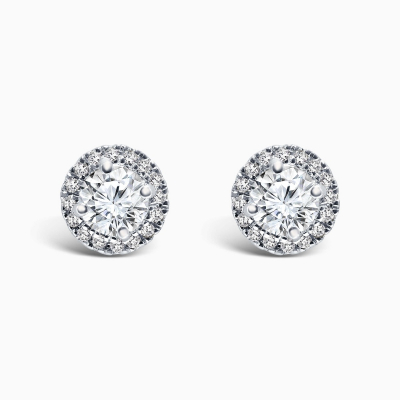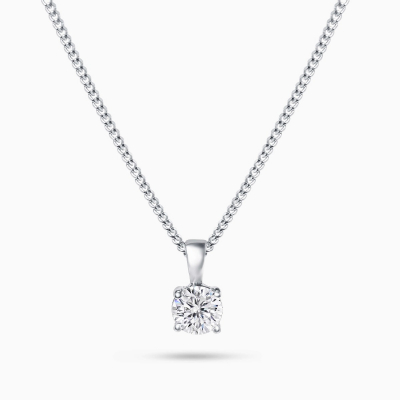GBP
/
GBP
/
Shipping to:
Currency:
GIA Diamond Grading Report
The GIA Diamond Grading Report includes an assessment of the 4Cs - Colour, Clarity, Cut, and Carat Weight - along with a plotted diagram of its clarity characteristic and a graphic representation of diamond's proportions. GIA issues the Diamond Grading Report for loose natural diamonds only, weighing 0.15 carats or more. For standard round brilliant cut diamonds falling in the D-Z colour range, the report also includes a GIA Cut grade.
Get a FREE Quote for a GIA-Certified Diamond!
Looking for a better deal on a GIA-certified diamond you're about to purchase? Send us the certificate number, or if you don’t have it, just provide the shape, carat, colour, clarity, and measurements. We’ll do our best to beat the price. Let’s find you the best offer!
Name: *
E-mail: *
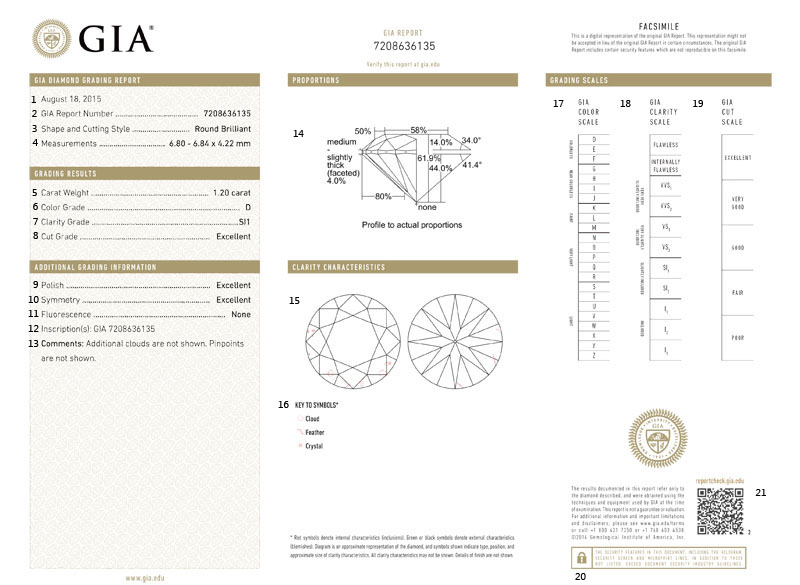
1. DATE
Date diamond was examined by GIA.
2. REPORT NUMBER
Unique GIA report number registered in GIA's extensive global database.
3. SHAPE AND CUTTING STYLE
The outline of the diamond (shape) and the pattern of the facet arrangement (cutting style).
4. MEASUREMETS
Diamond dimensions listed as "minimum diameter" - max diameter x depth" for round diamonds and "length x width x depth" for fancy-shaped diamonds.
5. CARAT WEIGHT
Weight given in carats, recorded to the nearest hundredth of a carat. One carat is equal to 1/5 of a gram.
6. COLOUR GRADE
The absence of colour ranging from colourless to light yellow or brown when compared to GIA Master Colour Comparison Diamonds. Graded on a D-to-Z scale. If * appears next to the colour grade, a colour treatment was detected and will be explained in the Comments.
7. CLARITY GRADE
The relative absence of inclusions and blemishes. Graded on a scale from Flawless to included based on size, natural, number, position, and relief of characteristic visible under 10x magnification
8. CUT GRADE
For standard, D-to-Z colour, round brilliant diamonds. Cut grade incorporates the aspects of face-up appearance, design, and craftsmanship. Graded on a scale from Excellent to Poor.
9. POLISH
Smoothness of the diamond's surface, assessed on a scale ranging from Excellent to Poor.
10. SYMMETRY
Exactness of the diamond's outline, and the shape, placement, and alignment of its facets, assessed on a scale ranging from Excellent to Poor.
11. FLUORESCENCE
Strength and colour of the diamond when viewed under long-wave ultraviolet light. A fluorescence description of "none" represents a range of fluorescence from Indiscernible to Very Faint. Used for identification purposes.
12. INSCRIPTION (S)
Any text, symbols, logos, or a unique GIA report number inscribed on the diamond's girdle.
13. COMMENTS
Additional identifying characteristics or features that are not otherwise represented on the report. If a treatment is detected, such as laser drilling, it would be described here.
14. PROPORTION DIAGRAM
Graphic profile representation of the diamond's actual proportions.
15. PLOTTED DIAGRAM
Approximates the shape and cutting style of the diamond. Symbols indicate the type or nature, position and the approximate size of a clarity characteristic.
16. KEY TO SYMBOLS
Lists the characteristics and symbols shown on the plotting diagram, if present.
17. GIA COLOR SCALE
Illustrates the GIA Color grades and their relative positions in the GIA Diamond Color Grading System.
18. GIA CLARITY SCALE
Illustrates the GIA Clarity grades and their relative positions in the GIA Diamond Clarity Grading System.
19. GIA CUT SCALE
Illustrates the GIA Cut grades and their relative positions in the GIA Diamond Cut Grading System. Availble for standard round brilliant cut diamonds in the D-to-Z color range and Flawless-to-I3 clarity range.
20. SECURITY FEATURES
Microprinting, security screens, watermarks, a two-dimensional barcode, a hologram, and sheet numbering safeguard report integrity and facilitate document authentication.
21. QR CODE
A two-dimensional barcode that, when scanned, verifies data on the report against the GIA database.







